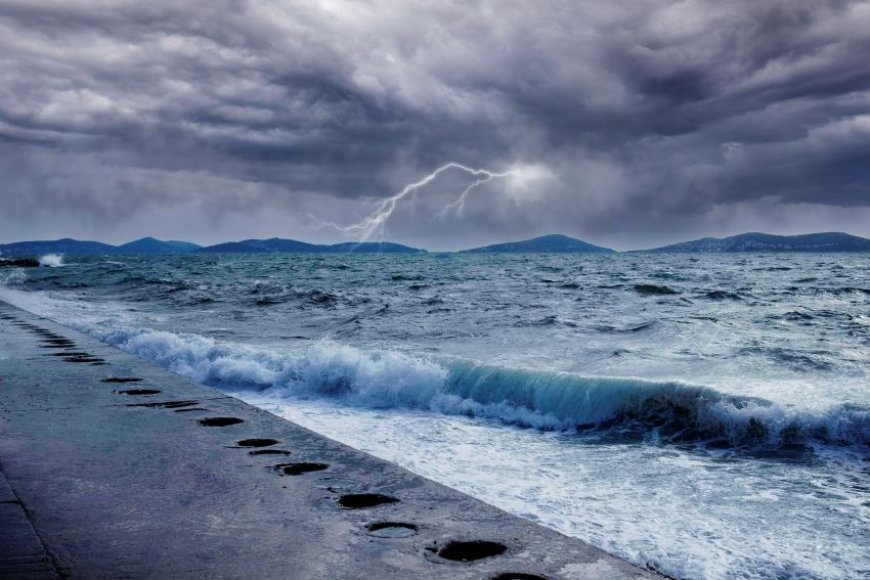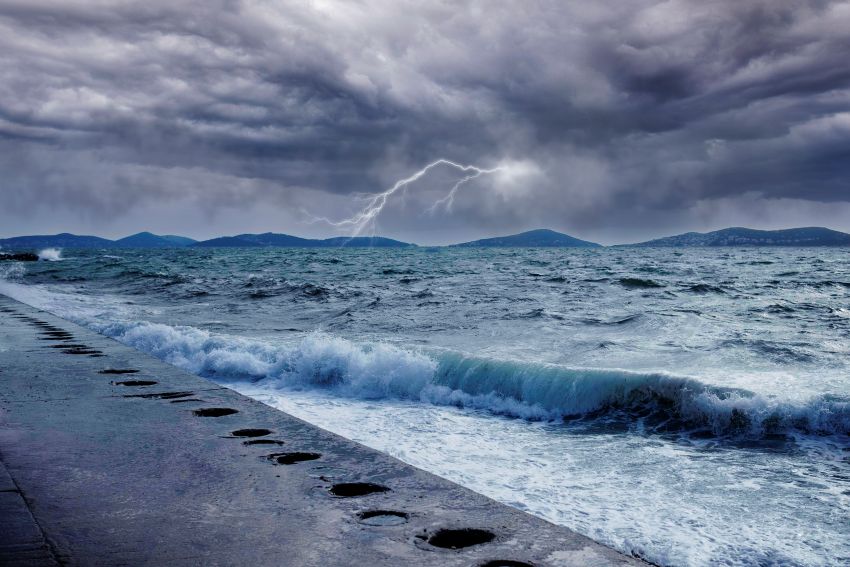Hurricane Gil Rapidly Gains Strength: Travelers Heading to Hawaii Urged to Exercise Caution


An unexpected upgrade of Tropical Storm Gil to hurricane status was confirmed by NOAA and the National Hurricane Center after it was first identified as a tropical storm. This change happened quickly, with sustained winds reaching about 75 mph (120 kph). At the time of the advisory, there were no coastal watches or warnings. The storm’s center was located about 1,160 miles (1,865 km) west-southwest of Baja California, moving west-northwest at roughly 20 mph (31 kph).
Meteorological Context and Forecast Evolution
According to the National Hurricane Center, Gil had been progressing steadily in the eastern Pacific, with initial data indicating wind speeds near 50 mph (85 kph) on July 31, 2025, at around 1,295 km southwest of Baja California. By August 1, 2025, its upgrade to hurricane was confirmed when wind strengths rose to 75 mph (120 kph). The motion of the cyclone was tracked at west-northwest near 20 mph, with a steady forecast to maintain this course over the weekend, progressively slowing toward Monday.
Weakening was forecast to begin by Saturday, with a post‑tropical transition anticipated by Sunday night.
Travel Advisory Issued for Hawaii-Bound Visitors
Even though Gil is not expected to make landfall, a travel advisory was issued specifically for tourists journeying to Hawaii. The warning encouraged caution due to its rapid strengthening and potential indirect impacts. Contingency preparations were encouraged, such as reviewing insurance, scheduling travel conservatively, and monitoring local weather advisories. The advisory was issued because the storm’s path over open ocean could influence travel schedules or conditions indirectly.
Regional Hazard Conditions and Related Warnings
Alongside Gil, Hurricane Iona—another eastern Pacific storm—was monitored as it had weakened into a tropical depression and was located more than 1,400 miles west of Honolulu. Iona did not threaten land either but contributed to the heightened vigilance.
Hawaii authorities also highlighted elevated fire risks, citing the combination of strong winds, low humidity, and dry vegetation, which could lead to rapidly spreading fires. Public education on these secondary hazards was promoted in tandem with storm tracking updates.
Storm Metrics and Intensity Profile
From official NOAA advisories, the following metrics were recorded:
- Location: ~17.4–18.3° N latitude, 126.8–128.6° W longitude (~1,160–1,250 miles WSW of Baja California)
- Intensity: Sustained winds of 70–75 mph (110–120 km/h); hurricane‑force winds extending about 30 miles (45 km) from the eye, and tropical‐storm‑force winds reaching up to 140 miles (220 km) outward
- Central pressure: Recorded at approximately 991–992 mb (29.27–29.30 inches)
- Movement: Progression toward the west‑northwest (~295–300° bearing) near 20 mph (31 kph), expected to slow mildly by Monday.
Projected Path and Weather Outlook
Forecast models projected that Gil would continue its west‑northwest motion over open ocean, with the storm weakening gradually during the weekend. A significant reduction in intensity was expected by Sunday, when a transition into a post‑tropical system becomes likely. By early Monday, further slowdown and diffusion across cooler waters were anticipated.
No land impacts were expected; however, the storm’s broad tropical-storm-force wind field and indirect effects (such as marine swell and elevated coastal conditions) were noted—especially for oceanic traffic and expired Hawaii travel windows.
Travel Implications: Planning for Visitors
Flights and Itineraries
Although direct impacts are improbable, flights headed to Hawaii or through affected airspaces may experience schedule disruptions, turbulence, or rerouting. Travelers were advised to maintain flexibility, examine cancellation policies, and track airline bulletins vigilantly.
Cruise and Marine Travel
Ships navigating the eastern Pacific were recommended to adjust their trajectories or departure timing to avoid areas with expected tropical‐storm-force winds. Acknowledgement was made that coastal regions, while not under watches, might still witness rough seas or swell.
On‑Island Preparedness
Upon arrival to Hawaii, travelers were urged to observe local alerts—especially regarding fire danger. Elevated fire risk conditions, characterized by persistent dry weather and gusty winds, were being closely monitored.
Insurance and Safety Measures
Emphasis was placed on confirming travel insurance policies, given insurance wait periods and hurricane provisions. Gathering emergency contact information, preparing basic emergency kits, and coordinating group or family communication plans were all suggested as prudent steps.
Official Sources and Monitoring Channels
The National Hurricane Center (NHC) and Central Pacific Hurricane Center (CPHC) were cited as the principal official bodies tracking Gil’s development, issuing bulletins, and generating graphical forecasts. They provided wind‑speed probability maps, cone forecasts, and updated public advisories.
These agencies’ websites were stated to be the most reliable reference for real‑time bulletins and hazard updates, particularly for those planning near‑term travel or navigating marine routes.
Travel‑Magazine Perspective: What Tourists Should Know
Why It Matters
Even though Gil is not anticipated to make landfall, its rapid intensification and position in the eastern Pacific minimum distance from Baja California (~1,160–1,250 miles) justify precautions for oceanic travel and inbound flights. The advisory was issued due to the storm’s indirect potential to disrupt itineraries or exacerbate hazardous conditions.
How Visitors Were Advised to Prepare
- Flexible booking and travel arrangements were encouraged.
- Travel insurance clauses related to hurricanes and 30‑day waiting periods were emphasized.
- Awareness around indirect phenomena like marine swell, high surf advisories, or strong offshore winds was raised.
- Internal alerts regarding fire hazard potential, owing to strong, dry winds over Hawaii, were incorporated into planning.
Context of the 2025 Eastern Pacific Storm Season
Gil’s emergence happened during a busy Pacific storm period, coinciding with Tropical Storm Iona, which had previously been a hurricane but was weakening in waters west of Hawaii. Meteorologists noted the possibility of additional storm formations in coming days.
Final Note for Travelers
Although Hurricane Gil is likely to weaken and become a post-tropical cyclone by Sunday, people should stay alert through Monday due to possible lingering marine swell or other weather issues. Travelers were reassured that, as of August 2, 2025, no coastal warnings or watches had been issued. However, preparedness and awareness were encouraged as NOAA’s official agencies closely monitored the storm.
The post Hurricane Gil Rapidly Gains Strength: Travelers Heading to Hawaii Urged to Exercise Caution appeared first on Travel And Tour World.






